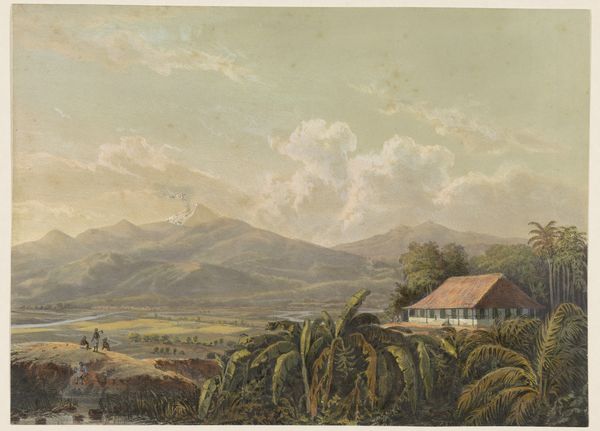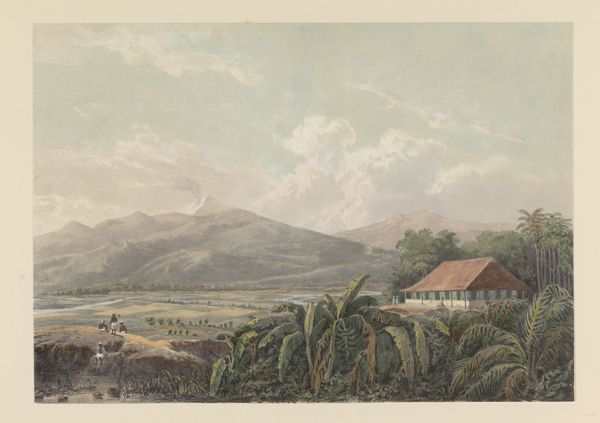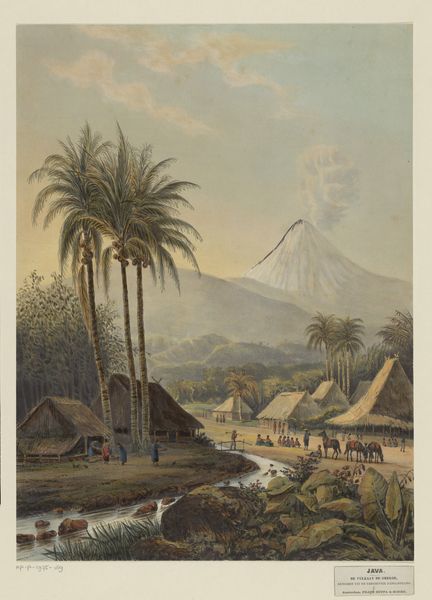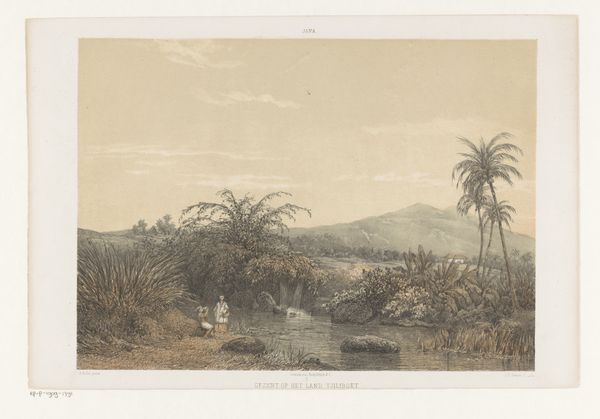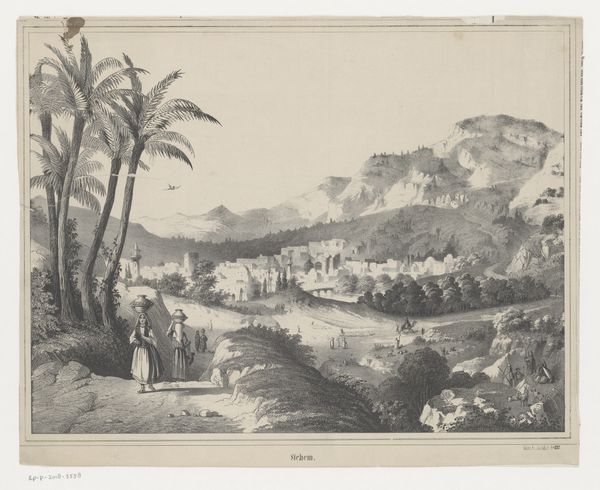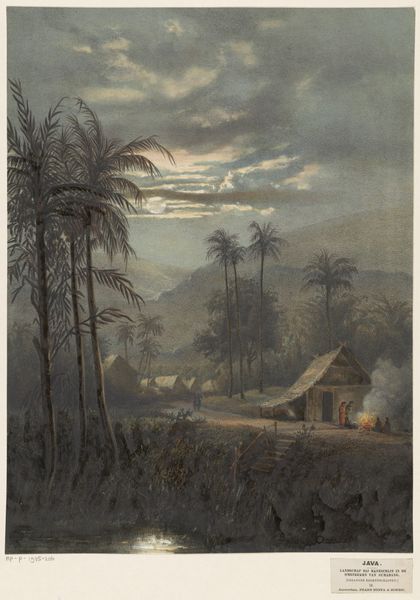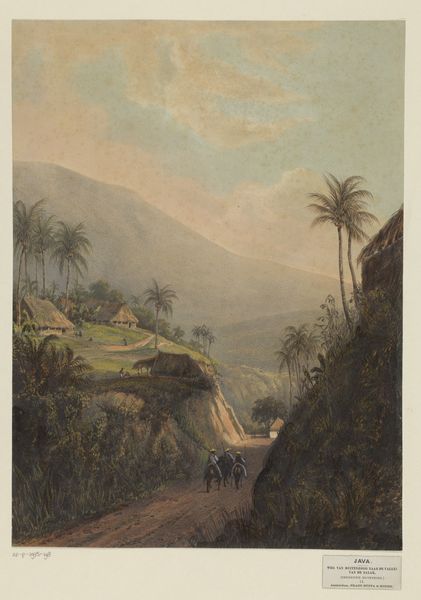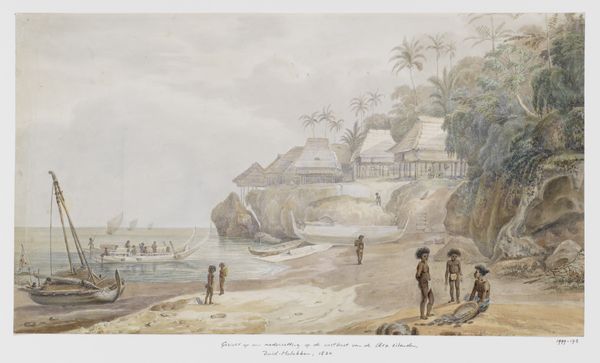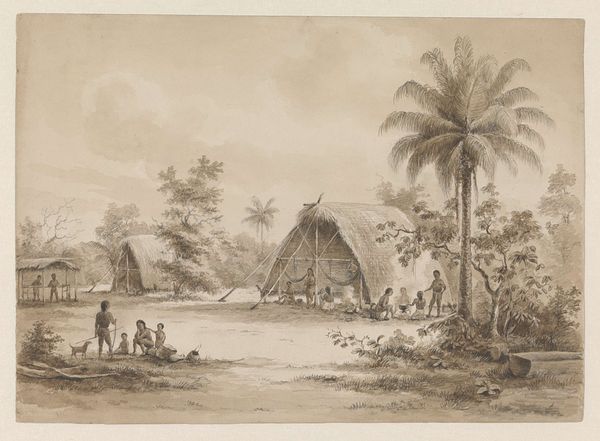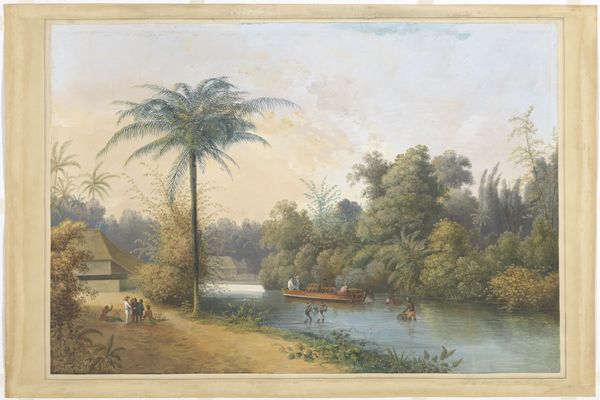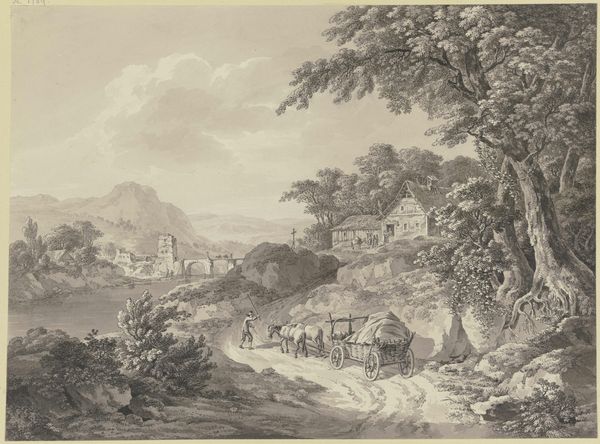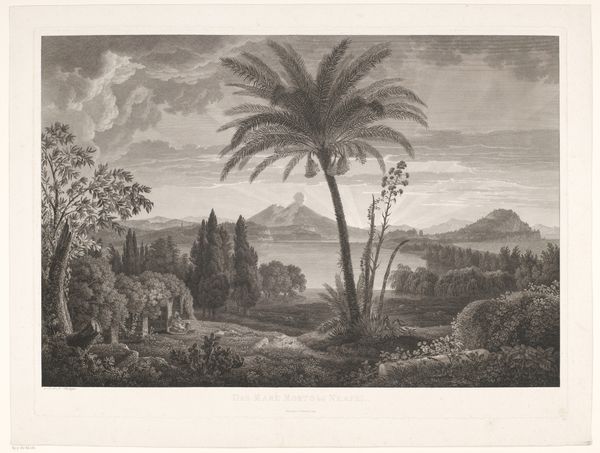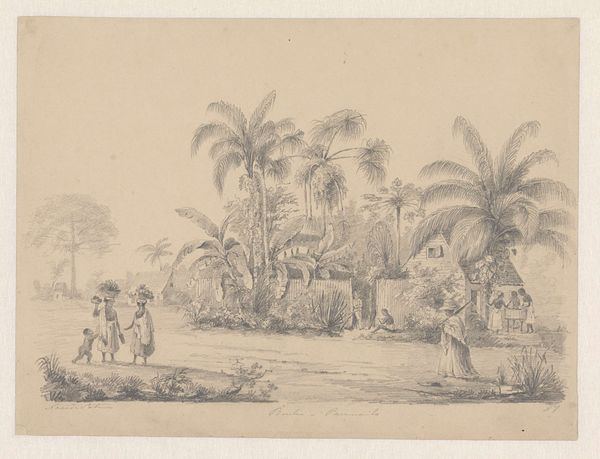
watercolor
#
dutch-golden-age
#
landscape
#
watercolor
#
orientalism
#
genre-painting
#
watercolor
#
realism
Dimensions: height 265 mm, width 363 mm
Copyright: Rijks Museum: Open Domain
Editor: We're looking at "Dorpsfeest in de buurt van de berg Ardjoeno," a watercolor created in 1869 by Johan Conrad Greive. I’m struck by how delicate the colours are, giving it an almost dreamlike quality. What compositional elements stand out to you? Curator: Note how the structure dictates the narrative; the receding perspective guides our eye from the textured foreground, through the figures, to the imposing, almost ethereal mountain. Greive uses the formal structure of a scene—village buildings, groups of people, vegetation, and topography—to compose the artwork. It allows us to analyze it according to how form engenders meaning. Editor: Can you elaborate? I see the basic organization, but how does form generate meaning here? Curator: The composition isn’t accidental. The strategic arrangement and measured use of light lead the viewer's eyes on a compositional journey, from earthy foreground to mountain's sublime peak. The tonal range isn't about just making it aesthetically pleasing; it communicates a narrative of sorts through light, which moves and emphasizes parts of the piece, which informs the artwork’s form. Do you see how he balances a scientific or structural outlook alongside elements of painterly skill? Editor: I see how the composition is carefully structured, directing my gaze to key focal points, creating a journey of light and space. This analysis, focusing purely on the artistic elements, really allows one to think less about its possible interpretations of its historical setting and appreciate it for its intrinsic aesthetic properties. Curator: Precisely. Focusing on the visual, material, and structural aspects allows a rich appreciation without leaning heavily on social or historical narratives. This is not just a record; it’s a composed visual structure meant to engage through its intrinsic design. Editor: That’s changed my view. Focusing on its composition as a story being told through formal qualities is truly enriching. Thanks!
Comments
No comments
Be the first to comment and join the conversation on the ultimate creative platform.
